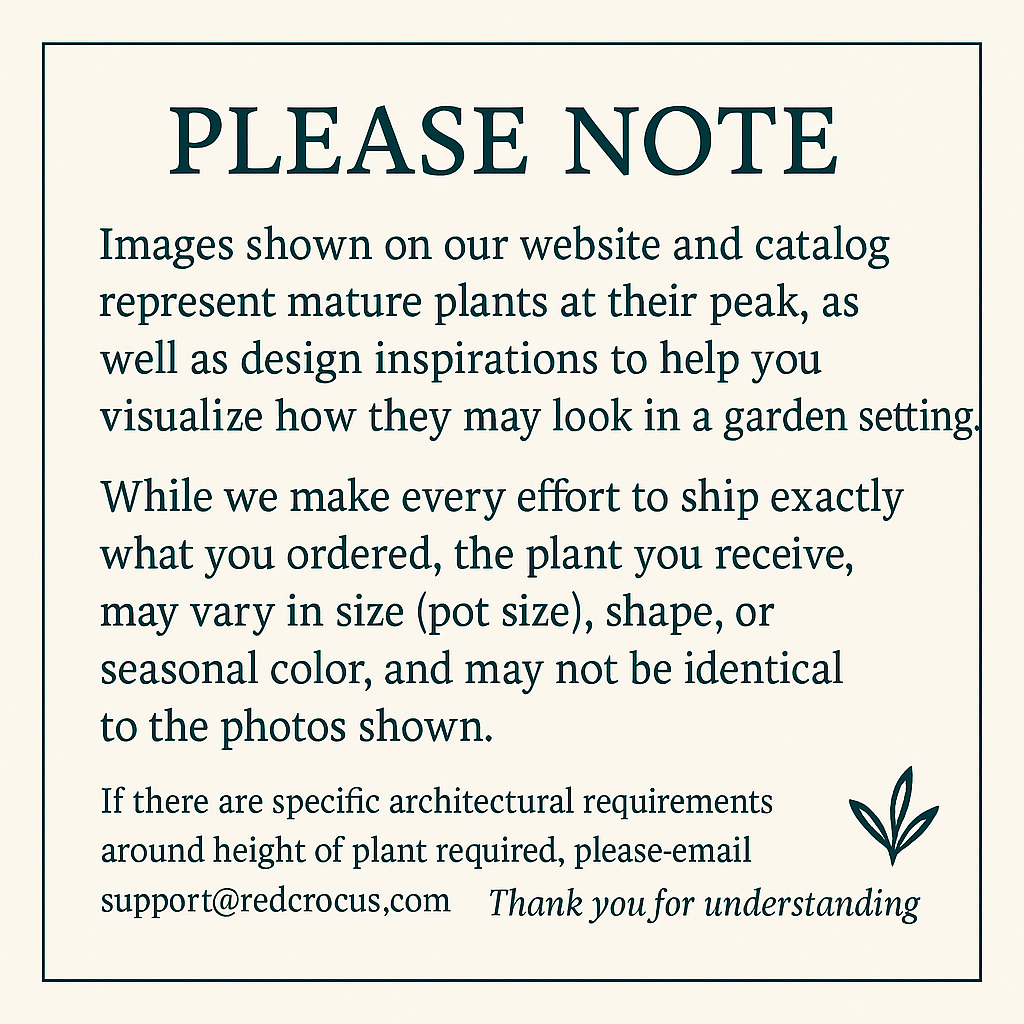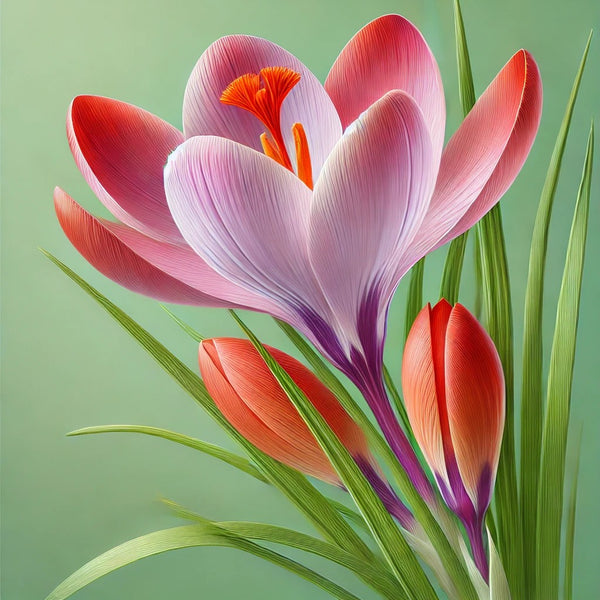1
/
of
21
Golden Glory Cornelian Cherry Dogwood–Deciduous–Attracts Pollinators 2-2.5" cal B&B
Golden Glory Cornelian Cherry Dogwood–Deciduous–Attracts Pollinators 2-2.5" cal B&B
Regular price
$1,600.00 USD
Regular price
$2,080.00 USD
Sale price
$1,600.00 USD
Unit price
/
per
Shipping calculated at checkout.
SKU:ntf1023-redcrocus
Couldn't load pickup availability
Cornus mas 'Golden Glory' - Single Stem
Description
Cornus mas 'Golden Glory', commonly known as the Golden Glory Cornelian Cherry Dogwood, is a deciduous shrub or small tree known for its early spring yellow flowers and attractive red fruits. It offers year-round interest with its lush green foliage turning to shades of red and purple in the fall.
Suggested Uses
This plant is ideal for use as a specimen tree, in mixed borders, or as part of a wildlife garden. Its early blooms provide a valuable nectar source for pollinators, and its fruits are attractive to birds.
Plant Details
-
 Botanical Name: Cornus mas 'Golden Glory' - Single Stem
Botanical Name: Cornus mas 'Golden Glory' - Single Stem -
 Common Name: Golden Glory' Cornelian Cherry Dogwood
Common Name: Golden Glory' Cornelian Cherry Dogwood -
 Size & Growth: 15-20 feet tall and wide
Size & Growth: 15-20 feet tall and wide -
 Hardiness Zones: 4-8
Hardiness Zones: 4-8 -
 Foliage Type: Deciduous
Foliage Type: Deciduous -
 Bloom Time: Late winter to early spring
Bloom Time: Late winter to early spring -
 Growth Rate: Moderate
Growth Rate: Moderate -
 Light Requirements: Full sun to partial shade
Light Requirements: Full sun to partial shade -
 Attracts Pollinators: Yes
Attracts Pollinators: Yes -
 Indoor Friendly: No
Indoor Friendly: No -
 Container Friendly: No
Container Friendly: No -
 Deer Resistant: Yes
Deer Resistant: Yes -
 Pet Warning: Non-toxic
Pet Warning: Non-toxic -
 Fragrant: No
Fragrant: No -
 Cut Flower: Yes
Cut Flower: Yes -
 Grows Well With: Other early spring bloomers like Forsythia and Witch Hazel
Grows Well With: Other early spring bloomers like Forsythia and Witch Hazel
Care Tips
-
 Planting Instructions: Plant in well-drained soil in a location with full sun to partial shade.
Planting Instructions: Plant in well-drained soil in a location with full sun to partial shade. -
 Soil Moisture: Keep soil evenly moist, especially during dry periods.
Soil Moisture: Keep soil evenly moist, especially during dry periods. -
 Soil Type: Prefers loamy, well-drained soil.
Soil Type: Prefers loamy, well-drained soil. -
 Humidity: Tolerates a range of humidity levels.
Humidity: Tolerates a range of humidity levels. -
 Pruning Instructions: Prune after flowering to maintain shape and remove dead or damaged branches.
Pruning Instructions: Prune after flowering to maintain shape and remove dead or damaged branches. -
 Winter Care: Mulch around the base to protect roots in colder climates.
Winter Care: Mulch around the base to protect roots in colder climates. -
 Planting Depth: Plant at the same depth as it was in the nursery container.
Planting Depth: Plant at the same depth as it was in the nursery container. -
 Fertilization: Fertilize in early spring with a balanced, slow-release fertilizer.
Fertilization: Fertilize in early spring with a balanced, slow-release fertilizer. -
 Special Care: Monitor for pests such as aphids and treat as necessary.
Special Care: Monitor for pests such as aphids and treat as necessary.
Share










































